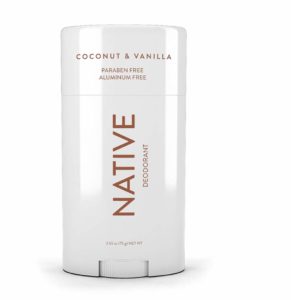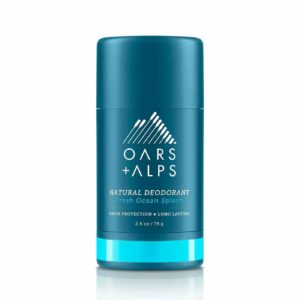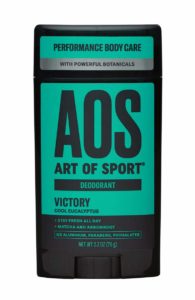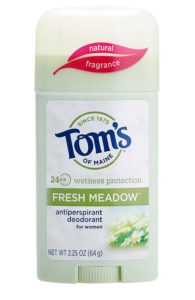Dangers of Deodorant

When pursuing a healthier lifestyle, it is important to not only be aware of what you are putting in your body, but also what you’re putting on your body.
It’s estimated 90 percent of Americans use deodorant on a daily basis. However, most individuals are unaware of the potential consequences of using it. There are two forms of widely-used personal hygiene products for sweat and odor: antiperspirants, which are intended to stop perspiration entirely, and deodorants that are intended to neutralize odors. Some brands have created a spray or stick that combine the two.
Because they can contain aluminum, antiperspirants are commonly thought to be the more harmful out of the two.
Aluminum is the ingredient that completely stops perspiration. These aluminum-based compounds can take the form of aluminum chloride, aluminum chlorohydrate, aluminum zirconium trichlorohydrex glycine and aluminum hydroxybromide. Although the label “aluminum salts” may not sound harmful, these compounds can have severe long-term effects on your health. Aluminum has been linked to several health issues, including Alzheimer’s Disease, kidney problems, seizures and bone formation disorders. There has also been much debate as to whether aluminum has direct links to breast cancer. Although several scientists have researched this issue and have developed different findings, aluminum has been shown to cause DNA mutation, a precursor for uncontrolled growth of cells, which can lead to cancer.
In addition, the Food and Drug Administration only requires that an antiperspirant brand reduce sweat by 20 percent in order to claim that their product provides all-day protection. Similarly, companies that state their product is ‘extra strength’ are required to only cause a 30 percent reduction in perspiration. So, antiperspirants may not even do what the name indicates, even if they do include questionable levels of aluminum.
Antiperspirants are not the only culprit, though. Deodorants that are not combined with antiperspirants can still contain harmful ingredients that may impact long-term health. Some to look out for are propylene glycol, parabens, triclosan and phthalates.
Propylene glycol is another frequently used ingredient with health hazards. Propylene glycol is used to increase absorption. However, it is also a skin irritant and a neurotoxin, which may cause liver and kidney damage. Or damage to your central nervous system. Though many have turned to natural deodorants to avoid harmful ingredients, one should still read the label; propylene glycol is still often found in natural deodorants.
Parabens, although used as a preservative in many personal care products, mimic estrogen levels in your body and can disturb your body’s hormonal balance. These parabens are labeled on deodorant products as methylparaben, propylparaben, butylparaben, ethylparaben, benzyl paraben or propyl paraben. They can increase your risk of hormonal cancers, cause onset of puberty or even cause birth defects in your future children.
Triclosan is intended to kill the bad bacteria in your body. However, it also kills the good bacteria that your body needs to function properly. Not only can triclosan irritate your skin and cause contact dermatitis, but it is also classified as a pesticide by the FDA and a possible carcinogen (a substance capable of causing cancer in living tissue).
Phthalates, another hormone-disrupting chemical, should also be avoided when choosing a deodorant. Phthalates are hidden on the label as a “fragrance,” making this a loophole that many companies rely on. Because fragrance is categorized as a trade secret, companies aren’t obligated to reveal this information.
So next time you’re choosing a deodorant — or another everyday hygiene product — be sure to read the label. Your hygiene products should be helpful, not harmful.
Try these Natural Deodorants:
Native Deodorant $12

Oars + Alps $14


Tom’s of Maine, $9
Art of Sports $9









